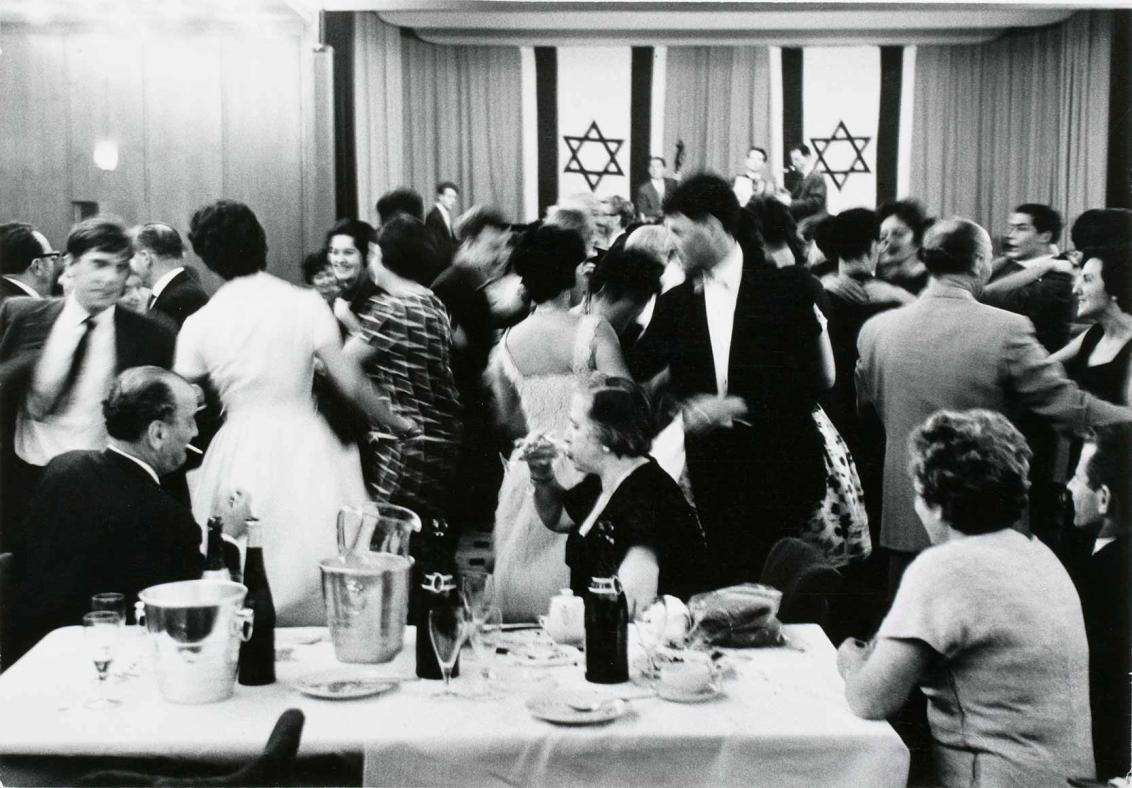Upcoming Exhibitions 2024/25
Press Release, Fri 29 Nov 2024
Access Kafka
13 December 2024 – 4 May 2025
On 12 December 2024, the Jewish Museum Berlin (JMB) will open the special exhibition Access Kafka, which brings together manuscripts, drawings, and letters from Franz Kafka’s estate with works of contemporary art. Starting from Kafka’s oeuvre, the JMB explores a question that goes to the core of our society’s self-perception: When is access granted, when is it refused? Under the headings Word, Body, Law, Space, Judaism, and Access Denied, the exhibition opens up a dialogue on the theme of “access” between Kafka’s works and the contemporary art of Yael Bartana, Maria Eichhorn, Anne Imhof, Martin Kippenberger, Maria Lassnig, Trevor Paglen, Hito Steyerl, and other artists.
Defiance: Jewish Women and Design in the Modern Era
11 July – 23 November 2025
The exhibition reveals the important role that Jewish women designers played in German society’s process of emancipation and modernization in the early twentieth century—as women, as Jews, and as artists. Through their works, the JMB gives new visibility to their forgotten biographies and their artistic and entrepreneurial achievements. Featuring around three hundred exhibits by more than fifty designers, this is the world’s first collective exhibition on the theme. It brings together pioneering women who battled social marginalization to attain prominent positions in their own domains—until the Nazi regime destroyed their careers and lives. Some managed to escape and start afresh abroad, but almost all have remained excluded from the history of German art and culture up to the present day. Visitors to the exhibition will encounter a broad spectrum of design and craft techniques, from goldsmithing and textiles, ceramics and wood carving, to fashion design and graphics.
- Kontakt
-
Dr. Margret Karsch
Press Officer
T +49 (0)30 259 93 419
presse@jmberlin.de
- Address
Jewish Museum Berlin Foundation
Lindenstraße 9–14
10969 Berlin
German Jews Today: Leonard Freed
11 November 2024 – 27 April 2025
In the early 1960s, the Magnum photographer Leonard Freed (1929–2006) traveled through West Germany taking photos of German Jews, mainly in the areas around Frankfurt and Düsseldorf. It was less than twenty years since the liberation of Auschwitz, and the Federal Republic of Germany’s confrontation with the crimes of Nazism had only just begun. Jews living in West Germany mostly described a sense of their lives as fragile; there were only a few, small Jewish communities. Freed wanted his photographs to counter non-Jewish Germans’ ignorance of the invisible Jewish minority in their country. The JMB holds all the fifty-two photos in the series that Freed published in 1965 under the title Deutsche Juden heute (German Jews Today), now presented in its entirety for the first time. The debate on whether it is possible to live in Germany as a Jewish person continues even today.
Inventories: The Legacy of Salman Schocken
20 May – 12 October 2025
The Jewish Museum Berlin invites US author Joshua Cohen to explore the cultural legacy of the publisher and department-store entrepreneur Salman Schocken. Through selected objects from the JMB collections, Joshua Cohen’s exhibition comments on the history of the publishing house Schocken Verlag, which he takes as a vantage point for a present-day perspective on culture and capital, department stores and museums—and, not least, new questions about (re)acquisition.
Claude Lanzmann: The Recordings
27 November 2025 – 12 April 2026
To mark the centenary of the birth of Claude Lanzmann (1925–2018), journalist and documentary filmmaker, this large-scale exhibition presents the audio archive of his film Shoah (1985) for the first time. The audio archive—along with the film, which made history when it appeared forty years ago—was designated part of the world’s cultural heritage by UNESCO in 2023. The collection includes 152 previously unknown magnetic tape cassettes. They document the numerous conversations with victims, perpetrators, and others that Claude Lanzmann and his assistants carried out in the 1970s and early 1980s, during their many years of research before filming began. These audio recordings form the focus of the exhibition, supplemented by objects, documents, and film footage.
Current press images for attributed use

Leonard Freed, Simhat Torah ball, Cologne, 1961, Jewish Museum Berlin, accession 2006/198/8.
German Jews Today: Leonard Freed
11 November 2024–27 April 2025
Further information about this photo can be found in our online collections (in German)
Download (ZIP / 853.73 KB / in English and German)
Claude Lanzmann's Audio-Archive, Jewish Museum Berlin, photo: Roman März
Claude Lanzmann: The Recordings
27 November 2025–12 April 2026

Dorothea Kuttner, hand-knotted cushion, 1920-1924, with a distorted swastika in protest at her teacher's instructions, donation by Silvia Rieder,
Jewish Museum Berlin, accession 2022/82/0, photo: Roman März
Defiance: Jewish Women and Design in the Modern Era
11 July–23 November 2025

Mary Flanagan, Still from [borders: chichen itza], 2010; courtesy of the artist
Access Kafka
13 December 2024–4 May 2025

Library of the Schocken Verlag, Jewish Museum Berlin, photo: Monika Sommerer
Inventories: The Legacy of Salman Schocken
20 May–12 October 2025









